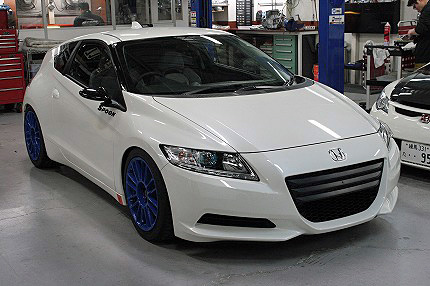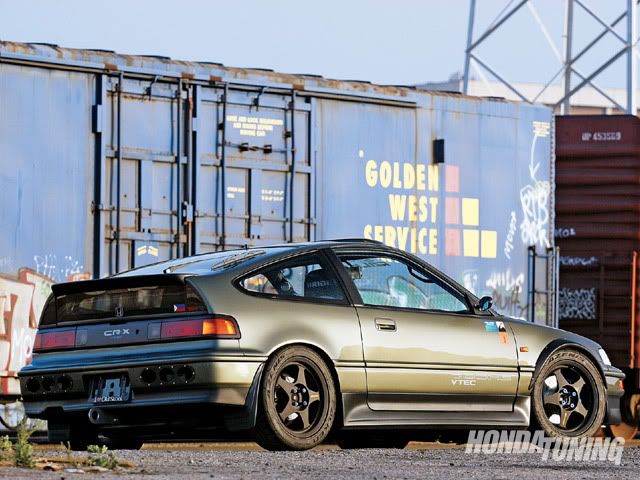JDM
The term Japanese domestic market (JDM) is used by companies
in Japan to refer to the local market for domestic goods and services, as
opposed to the international, non-Japanese market. Within the automotive
hobbyist import scene, this term, and the related term Japanese domestic model,
most commonly refer to Japanese-brand automobiles and parts designed and
constructed to conform to Japanese vehicle and equipment regulations and to
suit Japanese market preferences.

The term Japanese domestic market (JDM) refers to the local market in Japan for Japanese-made motor vehicles and components. Within the car and motorcycle hobbyist import scene, this term, and the related term Japanese domestic model, most commonly refer to Japanese-brand automobiles and parts designed and constructed to conform to Japanese vehicle and equipment regulations and to suit Japanese market preferences.
JDM vehicles migrate to other markets through ordinary commerce and the grey market.

JDM cars were limited by a jishu-kisei (gentlemen's agreement) among manufacturers to 280 horsepower (PS) (276 hp) in 1988 and a top speed of 190 km/h (118.1 mph) since the late 1970s, both imposed by JAMA, mostly due to safety concerns and the latter due to concerns regarding bōsōzokugangs. The horsepower limit was lifted in 2004. However, the speed limit of 180 km/h (111.8 mph) remains in effect, depending on the make and model of vehicle. Many JDM sports cars have speedometers that only go up to 180 km/h (111.8 mph), even though the car would be capable of much higher speeds if not for the built-in limiter.
JDM vehicles often differ in features and equipment from vehicles sold elsewhere. For example, Honda has produced many different versions of the B18C 1, B16A and K20A engines for various markets worldwide. This is done due to varying emission regulations in different countries. Internet-based navigation systems have been installed in most vehicles sold in Japan, and as of exporting, those navigation units are beginning to turn up in export markets. Honda's system is called Internavi, Nissan's is called CarWings, and Toyota's system is called G-Book. All three systems use cellular connections from the driver's cellphone for activation, which might be compatible with satellite navigation systems deployed internationally.

Vehicles built to JDM specifications may have stiffer suspensions and improved throttle response over vehicles built for different markets, due to differing driving styles and different road types. For example, the USA features long highways where a smoother ride would be preferable, while Japan's roads are short and twisty, where a stiffer suspension is desired for improved handling capability. For the US and European market versions, some features may be removed in order to stay below a certain pricing goal for the car, such as using a conventional rear suspension instead of a double wishbone suspension and lack of electronic devices like Active Yaw Control. Furthermore, engine power of JDM sports cars is sometimes reduced because of stricter emission standards in other countries.

The Japanese market does not apply any of the international VIN systems; instead, Japan uses a Frame Number, which is a string of 9 to 12 alphanumeric characters often identifying a particular make and model, and a serial number of the vehicle. For example, Frame Number SV30-0169266 breaks down as "V30" identifying the model as Toyota Camry/Vista x30; "S" identifying the engine (4S-FE), and 0169266 being the serial number of the vehicle. Vehicle make is not identified at all, though different manufacturers use slightly different frame number structures and it is usually easy to determine make from the frame number. Toyota usually uses 7 digits for serial number while Nissan uses 6, for example.

Because a frame number contains far less information than a VIN, JDM vehicles also use a Model Code as a supplement. SV30-BTPNK, for example, wherein "SV30" would have the same meaning as above, and BTPNK would designate a set of features incorporated in the vehicle.

The export of used vehicles from Japan is a substantial industry; stringent roadworthiness inspections make it costly and difficult to keep a car beyond a certain age in Japan, and so used Japanese vehicles are exported, primarily to other markets with left-hand traffic, though Japanese imports are also popular in Russia. A relatively small number are exported to Canada, where a vehicle over 15 years old need not be certified as conforming to Canada Motor Vehicle Safety Standard, and to the United States, where a vehicle more than 25 years old is admissible.

Vehicle tuners in markets outside Japan often import JDM components for installation on non-JDM vehicles, to attain specific appearance and/or performance characteristics. JDM vehicle body parts, lights, mirrors, wheels, and emblems are among the popular exports for conversion of non-JDM vehicles. In most cases, no significant traffic-compatibility issue arises from the installation of JDM components outside of Japan, but there are safety hazards associated with using JDM headlamps in countries where traffic flows along the right side of the road. This is because all JDM headlamps are engineered for use on the left side of the road; a left-traffic low beam in right-hand traffic blinds oncoming motorists and fails to light the right-side driver's way safely ahead


No comments:
Post a Comment